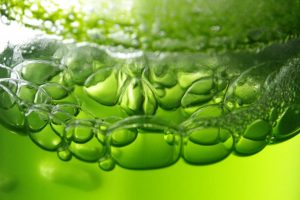
Chlamydomonas reinhardtii is a model green microalgae that produces lipid during nutrient stress. The bio-oil produced can be utilized for transportation fuel and energy production. Using systems biology we aim to uncover the regulatory and signaling networks of C. reinhardtii during state transitions from growth (biomass accumulation) to lipid accumulation. Such insights will be crucial for the rewiring networks for the produce a robust, high yield, biofuel production strain alga. New molecular tools like CRISPR (Clustered Regularly Interspaced Short Palindromic Repeats) Cas9 gene editing can be deployed to rationally manipulate the genome to generate a more efficient biofuel strain of algae.
Molecular Mechanisms of Phenotype Transitions. Upon nutrient starvation, unicellular green algae Chlamydomonas reinhardtii undergoes a lipid accumulation phenotype. We are currently working on a high resolution time series interrogation of 3 molecular layers (mRNA, miRNA and chromatin state) that grant this phenotype transition under 3 different nutrient starvations, and their corresponding reversions after nutrient re-supplementations.
